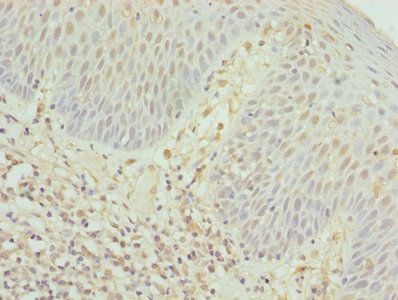![CD8(RIV11), CF405S conjugate, 0.1mg/mL [26628-22-8] CD8(RIV11), CF405S conjugate, 0.1mg/mL [26628-22-8]](https://biotium.com/wp-content/uploads/2016/12/CD8-CF647-RIV11-PBMC.jpg)
CD8(RIV11), CF405S conjugate, 0.1mg/mL [26628-22-8]
BNC040333
ApplicationsFlow Cytometry, ImmunoFluorescence
Product group Antibodies
TargetCD8A
Overview
- SupplierBiotium
- Product NameCD8(RIV11), CF405S conjugate, 0.1mg/mL
- Delivery Days Customer9
- ApplicationsFlow Cytometry, ImmunoFluorescence
- CertificationResearch Use Only
- ClonalityMonoclonal
- Clone IDRIV11
- Concentration0.1 mg/ml
- ConjugateOther Conjugate
- Gene ID925
- Target nameCD8A
- Target descriptionCD8a molecule
- Target synonymsCD8; CD8 antigen, alpha polypeptide (p32); Leu2; Leu2 T-lymphocyte antigen; OKT8 T-cell antigen; p32; T cell co-receptor; T8 T-cell antigen; T-cell antigen Leu2; T-cell surface glycoprotein CD8 alpha chain; T-lymphocyte differentiation antigen T8/Leu-2
- HostMouse
- IsotypeIgG1
- Protein IDP01732
- Protein NameT-cell surface glycoprotein CD8 alpha chain
- Scientific DescriptionRecognizes a protein of 32 kDa, identified as CD8a (also known as CD8 chain, T cell co-receptor, Leu2, and T8). CD8 molecule consists of two chains, termed and chain, which are expressed as a disulphide-linked heterodimer or as an homodimer. CD8 is expressed on T cell subset (cytotoxic/suppressor T cells), thymocytes and NK cells. The majority of CD8 T-cells expresses CD8 as heterodimer. Some subpopulation of CD8 T cells as well as NK cells may express homodimer. CD8 functions as a co-receptor in concert with TCR for binding the MHC class I/peptide complex. The HIV-2 envelope glycoprotein binds CD8 chain (but not chain). The cytoplasmic domain of CD8 associates with p56lck tyrosine kinase. Primary antibodies are available purified, or with a selection of fluorescent CF® Dyes and other labels. CF® Dyes offer exceptional brightness and photostability. Note: Conjugates of blue fluorescent dyes like CF®405S and CF®405M are not recommended for detecting low abundance targets, because blue dyes have lower fluorescence and can give higher non-specific background than other dye colors.
- SourceAnimal
- Storage Instruction2°C to 8°C
- UNSPSC12352203


![FACS analysis of human peripheral blood lymphocytes using GTX01467-06 CD8 alpha antibody [RPA-T8] (FITC). Solid lone : primary antibody Dashed line : isotype control antibody amount : 1 microg (5 microl)](https://www.genetex.com/upload/website/prouct_img/normal/GTX01467-06/GTX01467-06_20200428_FACS72_w_23053121_484.webp)




